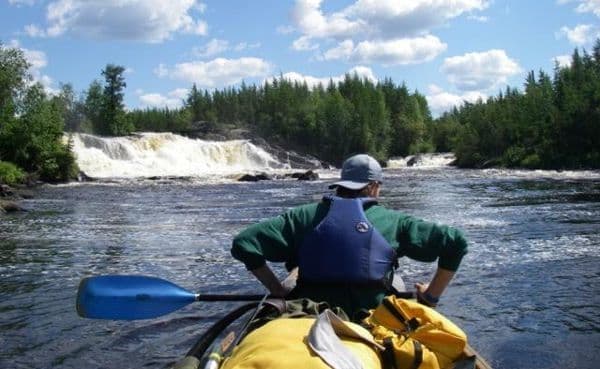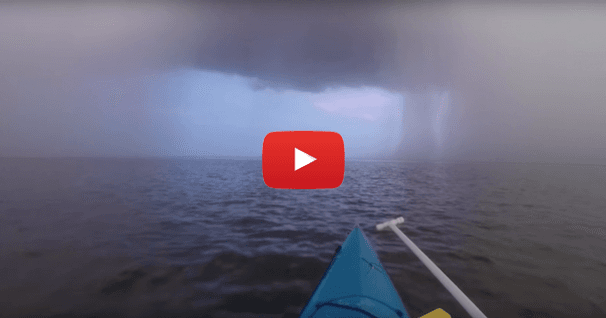The Benefit of Using Guide Books
I turned 76 in September. No matter, I continue to think—and largely feel—like I’m 29…well, maybe 30. The heart attack I had in 2013 hasn’t slowed me down. Early in life I became a fan of Calvin Rutstrum’s books. I read them all, over and over again. In one of his titles (I believe it was “North American Canoe Country”), Rutstrum referenced the Berens River, Manitoba, which he said was beautiful and challenging. Manitoba rivers are among my favorites: I’ve done the North Knife (three times), the Bloodvein, Seal, Caribou and Thlewiaza-Tha-anne. The Berens was on my list but somehow, I never got around to doing it.
That changed in July of 2016, when I joined seven friends, one of whom was my age. He had canoed the river about 20 years earlier and remembered it as spectacular, with many waterfalls and rapids, obscene fishing (almost exclusively walleyes), nice campsites and no people. Tom remembered the river as easy, but in respect to our advanced ages, we agreed to shorten our daily travel to 10 miles a day—one-third less than what he averaged in 1966 when he paddled it with friends.

Over the years, Tom and I, and his son Jack, have canoed many tough Canadian rivers. Routes included the Burnside River (Nunavut, Canada), North Knife (Manitoba) Porcupine and MacFarland (Saskatchewan) Kopka, Gull (Ontario) and many more. Given our experience, we were sure the Berens would be a piece of cake. We didn’t even read Hap Wilson’s carefully crafted Berens River trip guide. I just folded the guide and stuffed it into a pack, certain that I could just figure things out. Early on, I paid a heavy price for my smart-aleck attitude.
Shortly after our float plane set us down on Nite Owl Lake, the river split into three channels. There was a small falls on the left, a dicey rapid in the center and a Class II+ big water rapid on the right. We fleetingly searched for a portage, but couldn’t find one. The rapid on the right was doable so we ran it. One crew capsized but they were rescued quickly; everything was salvaged and nothing got wet or lost. Back in the canoes again, we paddled a few hundred yards and came to a killer falls. For nearly an hour we searched for a portage around it. There was none. The shoreline was thick with small trees; there wasn’t so much as an animal trail around the drop.
Fortunately, we had two axes and a full-frame saw and…Jack, who can best be described as a “human chain saw”. In no time, he cut a trail and we portaged.

Beyond the falls, the obstacles continued. Every few hundred yards there was another falls or impassible rapid. And there were no defined portages, even long overgrown ones. Getting around them meant more work for our “human chainsaw”. At around 5:30 pm we called it a day. We soothed our aches with some Jack Daniel’s Black and studied the map. Where did we go wrong? Why was this river, which Tom remembered it as easy, so difficult now? Then, I remembered the trip guide I had packed away.
Ha so! We had missed the first portage which bypassed all the falls and rapids we had bulled our way around. Yes, it was a long portage but it would have been far easier than a day of bush-whacking. Why didn’t we consult that guide? Because we had done so many Canadian Rivers together that we were confident we could “figure it out”. I figured we didn’t need no stinkin’ trip guide!
Wrong! In my book, “Canoeing Wild Rivers”, I wrote: “One can never have too much information about a river!” And here we were, battered and bruised because I refused to follow my own advice.
From then on, we relied on the trip guide and never had a problem—at least not one related to getting down the river efficiently and safely. But for Tom and I there were some age-related concerns:
1. Loading and unloading gear into the canoe was marginally problematic. On two occasions, I lost my balance and slipped into the water. Fortunately, Jack pulled me out both times.
2. Carrying heavy loads. Twenty years ago, I could loft my 75 pound Royalex Dagger Venture alone, and on my “off side”, no problem at all. Now, unless I use grit determination and everything I’ve got, I need help. I bemoan my subtle loss of strength. Once the boat is up, I can carry it along a relatively easy trail, but up-and-down obstacles are stoppers.
3. I cannot carry a heavy pack, even short distances without using a tumpline. Without the tump, the pack sways and falls away from my back, which causes a loss of balance—moreso when going uphill. The tump stabilizes the load so I can continue on. I don’t think I could do marginally tough trips now without a tumpline.
Okay, these are the “bads” of getting old. On a more positive note, advancing age has not affected my ability to canoe technical rapids. I’m still pretty good in whitewater. And my camping, cooking and navigational skills haven’t atrophied either. I can still canoe wild rivers if I take my time, rely on judgment and skill and leave the heavy lifting to younger folk. And oh yes, NOT diminish the value of advice from those who’ve been there before—aka, READ THE TRIP GUIDE before you go! From now on, I promise to follow my own advice!
Calvin Rutstrum continued to canoe and camp until age 86 when he died. Like Rutstrum, I’ll never be too old to follow my passion, though my future canoe trips will necessarily be less physical. If I’m still around at 86, look for me somewhere on a river!
Related Articles
Antonio De La Rosa, a 50 year old Spaniard, left the San Francisco Harbor on June 9th to start the 2,900…
Even if you do your research and check the weather before heading out, sooner or later every kayak…
"Rising Waters documents an attempt to be the first group to run all the rapids of the lower Terra Nova…
"Seven days, three rivers, one kayaker: Nouria Newman kayaks solo in India! Nouria Newman combines a…



